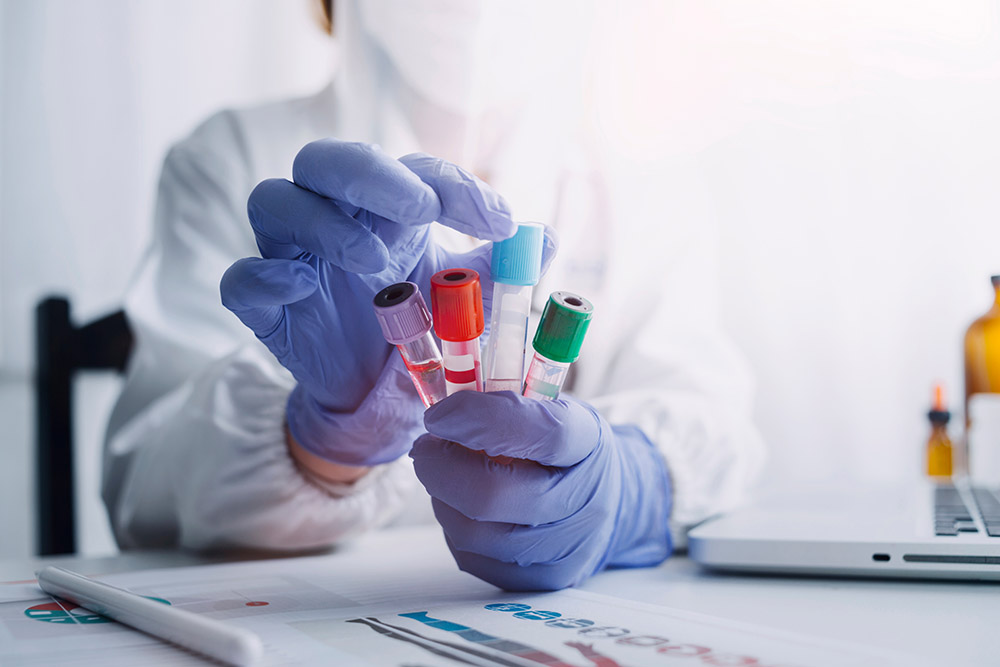In the 21st century, health science is entering a transformative era. For decades, medicine has largely revolved around a disease-centric approach — diagnosing, treating, and preventing illnesses. While this model has saved countless lives, it has also limited our understanding of what it truly means to be healthy. The future of health science lies not just in the absence of disease but in measuring vitality — the expression of human energy, resilience, and overall functioning at their peak potential.
Understanding the Shift: From Disease to Vitality
The Traditional Disease Model
Historically, healthcare systems have been designed around the treatment of disease. Physicians are trained to identify symptoms, locate their causes, and provide interventions to manage or eliminate them. This reactive approach focuses on problems that have already emerged rather than preventing them or optimizing well-being.
In this system, individuals are often considered “healthy” simply because no disease has been diagnosed. However, many people experience fatigue, low energy, mental fog, or emotional distress even without a clear medical condition. This exposes a critical flaw in the traditional model: health is not merely the absence of illness; it is the presence of vitality, strength, and balance.
The Emergence of the Vitality Model
The vitality model shifts the focus from treating sickness to nurturing and quantifying well-being. Vitality refers to the body’s capacity to adapt, recover, and function optimally in varying circumstances. Instead of waiting for disease to appear, the vitality model emphasizes proactive measurement and enhancement of health capacity.
This shift is fueled by advancements in genomics, digital health technologies, and systems biology. By measuring energy, resilience, and adaptability at the cellular and physiological level, scientists are beginning to quantify what it means to thrive, not just survive.
Redefining Vitality: A Multi-Dimensional Concept
Vitality encompasses far more than physical health. It includes the integration of physical, mental, emotional, and social well-being. Modern science recognizes that vitality is influenced by a combination of biological, psychological, and environmental factors.
1. Physical Vitality
Physical vitality relates to energy production, organ efficiency, muscle strength, and overall biological resilience. Metrics such as heart rate variability (HRV), mitochondrial function, metabolic rate, and hormonal balance all play a role in defining physical vitality.
2. Mental Vitality
Mental vitality involves cognitive performance, focus, and emotional regulation. A healthy brain isn’t just free from neurological disease — it demonstrates adaptability, creativity, and clarity under stress. Cognitive biomarkers, sleep quality metrics, and neurofeedback data are helping quantify this dimension.
3. Emotional and Social Vitality
Emotional health and social connection are now recognized as major determinants of vitality. Chronic stress, isolation, and negative emotional states can drastically reduce resilience. Conversely, strong social ties and emotional balance enhance longevity and quality of life.
4. Spiritual Vitality
While less tangible, spiritual vitality — having a sense of purpose, belonging, and connection — has been correlated with improved immune function, reduced inflammation, and longer lifespan. It completes the holistic framework of human vitality.
The Science of Measuring Vitality
Emerging Biomarkers
Health science is increasingly focused on quantifiable indicators of vitality. Unlike traditional biomarkers that detect disease (such as cholesterol or blood glucose), new vitality biomarkers assess how well the body maintains balance, energy, and resilience.
Some key examples include:
- Heart Rate Variability (HRV): Reflects autonomic nervous system balance and stress resilience.
- Epigenetic Clocks: Measure biological age versus chronological age, revealing how lifestyle affects cellular aging.
- Metabolomic Profiles: Capture the chemical fingerprints of metabolism and energy production.
- Inflammation Markers (CRP, IL-6): Indicate chronic stress load and recovery capacity.
- Microbiome Diversity: Associated with immunity, digestion, and mental health.
By combining these indicators, scientists can create a “vitality score” — a dynamic measure of how well the body is functioning overall, even in the absence of disease.
Role of Wearable and Digital Technologies
Modern wearables like smartwatches and biosensors are revolutionizing health tracking. These devices continuously measure data such as heart rate, oxygen levels, stress responses, and sleep patterns. With AI-driven analysis, this data can provide real-time feedback on vitality and recovery.
For example, wearable platforms now use HRV and sleep metrics to determine readiness scores — indicating whether your body is primed for exertion or needs rest. This approach transforms health from a static concept into a dynamic, daily experience.
The Integration of Artificial Intelligence in Health Prediction
Artificial Intelligence (AI) plays a pivotal role in shifting healthcare toward vitality-based models. By analyzing vast datasets of biological, behavioral, and environmental data, AI can detect subtle patterns that humans may overlook.
Key applications include:
- Predictive Analytics: AI can forecast early signs of physiological decline before disease manifests.
- Personalized Health Plans: Machine learning models can tailor diet, exercise, and recovery strategies based on individual data.
- Digital Twins: Virtual replicas of a person’s biology can simulate how lifestyle changes will affect vitality over time.
AI doesn’t just help diagnose disease — it enables anticipatory health optimization, making it possible to maintain vitality throughout life.
Holistic Approaches to Enhancing Vitality
To truly measure and improve vitality, modern medicine is integrating multiple disciplines: traditional healthcare, psychology, nutrition, and even ancient healing systems.
1. Nutrition and Cellular Health
A nutrient-rich diet directly influences vitality at the cellular level. Diets high in antioxidants, healthy fats, and plant-based compounds enhance mitochondrial function and reduce inflammation. Precision nutrition — guided by genetic and metabolic data — allows for customized dietary interventions that optimize energy and longevity.
2. Physical Activity and Recovery
Exercise remains one of the most powerful vitality boosters. Regular physical activity improves cardiovascular health, brain function, and hormonal balance. However, modern science also emphasizes the importance of recovery — including sleep quality, rest periods, and stress management — to sustain long-term vitality.
3. Mental and Emotional Balance
Mindfulness, meditation, and cognitive training improve focus and emotional regulation, which are essential components of vitality. Chronic stress accelerates biological aging, while emotional balance enhances neural plasticity and immune function.
4. Technological Biohacking
The rise of biohacking and self-quantification allows individuals to experiment with interventions such as red light therapy, intermittent fasting, cold exposure, and neurofeedback. These strategies, when used responsibly, can enhance metabolic efficiency and mental clarity.
The Role of Preventive and Precision Medicine
Preventive medicine focuses on avoiding disease before it occurs, while precision medicine tailors treatment based on individual characteristics. Combined, they form the backbone of vitality-centered healthcare.
Genomic sequencing, microbiome analysis, and continuous metabolic monitoring are empowering clinicians to predict disease risk and optimize health trajectories. This means future medicine will not only treat illness but guide individuals toward sustained vitality across their lifespan.
The Societal Impact of Measuring Vitality
As vitality becomes measurable, its implications extend far beyond individual health. Societies that prioritize vitality will likely see improvements in productivity, creativity, and social harmony.
Healthcare systems could shift from reactive models — burdened by chronic disease costs — to proactive, wellness-oriented frameworks. Employers might integrate vitality assessments into workplace wellness programs, while governments could use vitality metrics to design healthier communities.
Ultimately, vitality measurement could redefine global healthcare economics, moving from treatment-based systems to vitality-driven ecosystems that value prevention, performance, and longevity.
Challenges and Ethical Considerations
While promising, the vitality revolution also raises challenges:
- Data Privacy: Collecting continuous biometric data requires stringent data protection policies.
- Accessibility: Advanced health technologies must be made affordable to avoid widening health inequities.
- Scientific Validation: New vitality metrics must be validated through rigorous research before clinical adoption.
- Ethical Boundaries: Balancing enhancement and human authenticity remains an ongoing ethical discussion.
Addressing these issues will be vital to ensuring that vitality science benefits everyone, not just a privileged few.
The Future Outlook
In the coming decades, health science will likely merge biology, technology, and data analytics into a unified framework for vitality optimization. Routine checkups may include biological age assessments, resilience metrics, and predictive health dashboards. Doctors will transition from treating diseases to becoming vitality coaches, helping individuals sustain optimal performance throughout life.
As vitality becomes a new scientific language of health, society’s perception of wellness will evolve — from a passive state of being disease-free to an active pursuit of thriving at every level of existence.
FAQs: The Future of Measuring Vitality
1. What is the difference between health and vitality?
Health refers to the state of being free from disease, while vitality represents the body’s capacity to function, adapt, and thrive physically, mentally, and emotionally.
2. Can vitality be measured scientifically?
Yes. With biomarkers like HRV, epigenetic age, and metabolic profiles, scientists can now quantify vitality and track improvements over time.
3. How can lifestyle choices improve vitality?
Regular exercise, balanced nutrition, adequate sleep, and stress management are proven ways to enhance vitality and slow biological aging.
4. What role does mental health play in vitality?
Mental and emotional well-being are central to vitality. Chronic stress, anxiety, and depression can reduce resilience and accelerate aging.
5. Are wearables reliable for measuring vitality?
Modern wearables provide valuable real-time insights but should be used as part of a comprehensive health plan, not as standalone diagnostic tools.
6. How does AI contribute to vitality measurement?
AI analyzes large datasets to identify early health patterns, predict future risks, and create personalized wellness strategies that enhance vitality.
7. What does the future of vitality science look like?
The future lies in integrating genetics, data analytics, and preventive care into personalized, predictive systems that empower individuals to live longer, healthier, and more energetic lives.


















